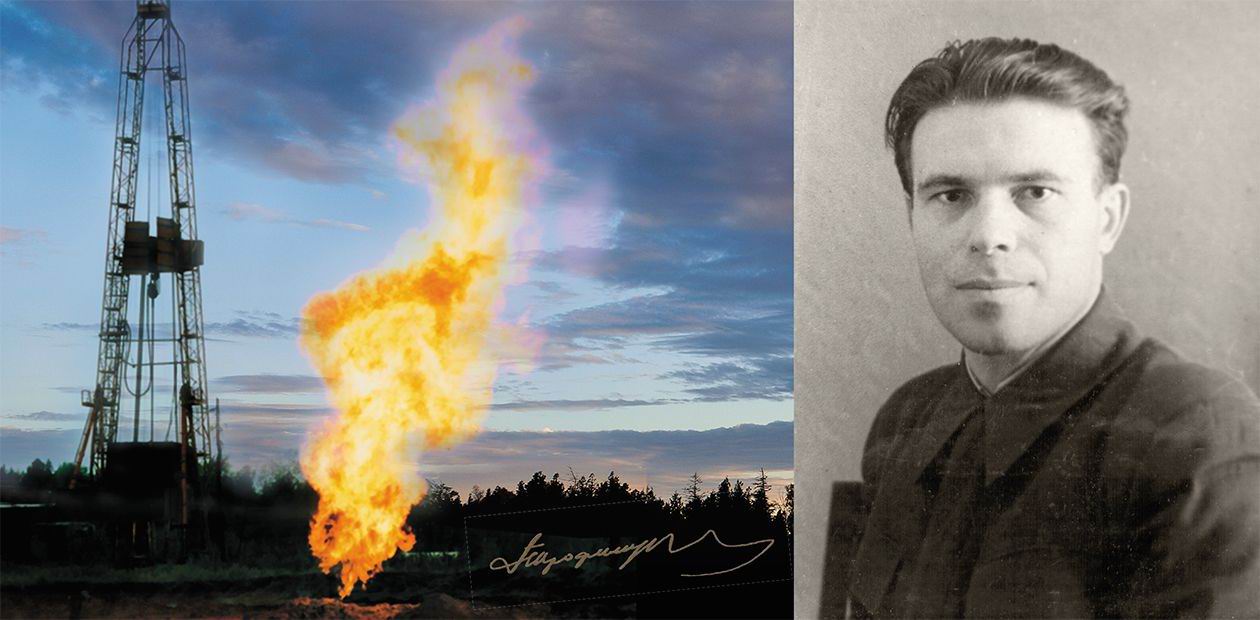Optimist in Search of Oil
In this issue we publish excerpts from a book dedicated to the outstanding discovery of oil fields in the Volga region during the Great Patriotic War (1941–1945) in the Soviet Union. The main character of this book, written by L. Mogilevsky, is Andrey Trofimuk, back then a young chief geologist of the Bashneft Association, who would subsequently become an academician and one of the founders of the Siberian Branch of the Academy of Sciences. The dramatic history of development of the “Second Baku” was described literally “hot on the heels,” in 1947. The narration grows especially intense as the events described were unfolding in the midst of the Battle of Kursk, when the front was in dire need of fuel for tanks and aircraft. The very first oil, which went directly from the wells to oil refineries, helped achieve a radical breakthrough in the Great Patriotic War. For this discovery, the 33‑year-old Andrey Trofimuk was awarded the title of Hero of Socialist Labor
Trofimuk devoted his entire life to the Big Oil of Russia. He took a direct part in the discovery and development of another two major oil-and-gas basins: West Siberian and East Siberian. And yet, while the development of the West Siberian oil basin is now common knowledge as half of Russia’s income comes from its production and sale, few people are aware of the East Siberian one. However, it was in East Siberia that Trofimuk’s grandeur as a scholar and petroleum geology expert manifested itself most conspicuously.
Trofimuk predicted the discovery of ancient pre-Cambrian oil in East Siberia as early as in 1960, long before the launch of large-scale search missions. At that time, all that science possessed was some general suppositions that pre-Cambrian sediments might have contained oil. It was only Trofimuk, with his experience and understanding of the laws of oil genesis as well as his special intuition of a petroleum geologist, who was able to give an accurate forecast that pre-Cambrian oil was to be searched for in East Siberia, in the sedimentary strata formed on the roof of the Siberian platform. He even named the structures that held the most promise for exploration.
Currently, the East Siberian basin lies at the core of development prospects for Russia’s entire oil-producing sector. What makes this object especially valuable is that the fields here contain mostly combined, helium–gas–oil deposits. Economists believe helium, as well as other useful components of the so-called “fat” gases, to be of greater value than oil itself. This kind of deposits has grown in significance over the past 15 to 20 years as the main source of helium, located in the United States, has been exhausting. But the need for helium is constantly growing. This precious component of natural gases will largely determine the industry of the future because it is essential for both coolants and new-generation nuclear reactors. The only source that can satisfy the world’s needs is East Siberia. Academician Trofimuk had proposed, even before the development of the deposits, to deploy a regional network of production facilities for deep, effective processing of hydrocarbon raw materials, including a helium plant; otherwise, these valuable components would have been discharged into the air or burned. However, this project requires large-scale investment.
In this respect, there are advantages to the fact that the fields of East Siberia have been developed at a slower pace than one might have desired. For example, the Yurubchen–Takhom field, which Trofimuk believed to be the largest one in East Siberia, a giant comparable to Samotlor, could have yielded great returns as early as in 1998–1999, but it still remains at the stage of exploration, i. e., only the first thousands of tons of oil and gas have been produced. Barbaric development of such a deposit would have caused irreparable damage to the country.
Another important discovery associated with the name of Trofimuk is gas hydrates. Different estimates exist for their reserves, but even the minimal ones give a figure greater than for all the reserves of oil and gas on the continent. According to Academician Alexei Kontorovich, a student of Trofimuk, by the middle of the 21st century, the world will have reached a maximum of oil and gas output, after which a decline will begin. This will necessitate, firstly, more efficient use of traditional energy sources and, secondly, massive development of new sources, with the leading role of gas hydrates.
The first gas hydrates were known as unwanted products, which would seal off wellheads in the conditions of the north. But Trofimuk, together with his coauthors, immediately realized the significance of these finds because he saw in gas hydrates a new source of energy. This episode demonstrated Trofimuk’s amazing ability to understand related areas of knowledge and to pick up everything new. He always supported research that could provide new facts even if they challenged accepted hypotheses. He would reiterate that fantasizing and making assumptions is as important a task for a scientist as being critical of any ideas or statements. His valediction to young people runs as, “Go ahead and prove any hypotheses, even the most fantastic ones! Only where there is a contradiction, there is a foundation for further forward movement.”
Trofimuk’s whole life shows that he was a real statesman, who envisioned far ahead, unlike those ones who could see no further than the tip of their nose. Another striking example is his fight for the purity of Lake Baikal. He made much effort to preserve the unique lake not only because he understood its significance for all humanity as the largest reservoir of fresh water. He as if foresaw the discovery of both gas hydrates and oil formations and predicted that the ancient lake would become a natural laboratory for studying these phenomena. In this regard, Academician Trofimuk was not only a statesman but also a man of the world. He made no difference between the interests of humanity and his own. Fiercely defending Baikal, he took an adamant stance and perceived any loss as his personal one. It is these personality traits that largely helped him discover the Second Baku. Although the book from which we publish the excerpts does not speak of it directly, it was a time of tough choices: either you make the discovery and get a hero’s medal or you fall under severe repressions.
What are the origins of Trofimuk’s personality?
Born in a small village, by no means pampered or spoiled during his upbringing, he was, by and large, a self-made man. Of course, the situation in education and science in the prewar years was favorable for his development as a person. All people throughout the Soviet Union sat down at school desks; schools and universities were on the rise. Although back then we were not the strongest ones in science, being yet unable to compete with the world’s luminaries since a mass education system had not yet fully formed, by the beginning of the war, a huge number of talented and educated people appeared in our country, primarily in the military sphere. Airplanes, tanks, Katyushas; then, the atomic project, the missile project, the oil project! Undoubtedly, when Trofimuk began his career, the prestige of science was very high with the powers-that-be. The state understood well that the defense capability of the Soviet Union in a hostile environment – and it really was such – could only be ensured by scientists. Thus, a balance was found between the interests of science and the state.
Now, unfortunately, this balance is broken. Not because scientists or state authorities are bad (although certain individuals did contribute to destroying the balance) but for completely objective reasons. One of them is very high oil prices. Today, there is no alternative source of energy: gas hydrates remain undeveloped; nuclear energy is developing slowly and is associated with high risks. Given that oil prices are high, now it is more profitable to extract it at any cost (including with losses) and sell it away without investing money in science and technology because in ten years, oil prices will fall and technology investment may not pay off. This is the objective pressure that hinders the development of scientific research that does not promise quick results. And since the bourgeois state, as Vladimir Lenin put it, is a committee for managing the affairs of the big bourgeoisie, i. e., the oligarchs, today the interests of this state discourage the development of scientific reserach, including that done by corporations. Nevertheless, the balance has to be restored.
Academician Trofimuk knew how to see into the future. Endowed with high professional intuition, he had believed in Big Oil long before the first oil gushers sprung into the sky. It was so in the Volga region and in West Siberia, and so it will in East Siberia too. Not everyone shared (and shares today) his optimistic beliefs about the high potential of this territory. And there is a certain amount of truth to it. But nothing stake, nothing draw. “A pessimist has no chance in finding oil!” so said Academician Trofimuk, an outstanding oilman.
Academician Nikolay L. Dobretsov
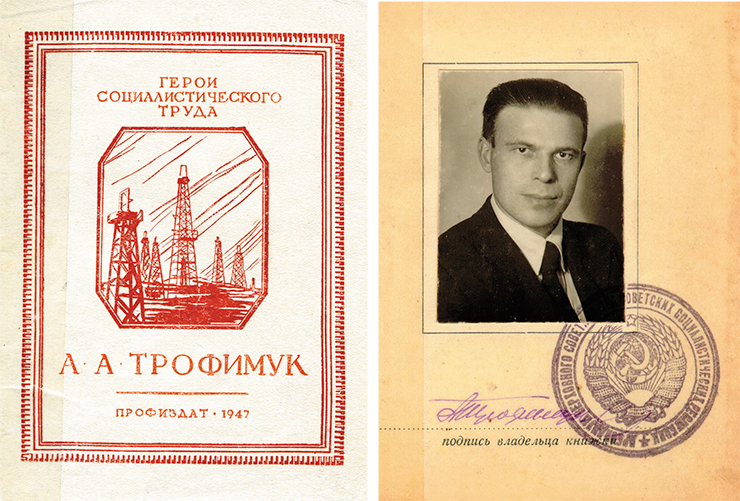
The hard autumn of 1942 went on. The front was moving further and further south. The Germans had captured the Maikop oil fields and were approaching Grozny. The country needed oil; no oil meant no fighting. Every engineer, every geologist, it seemed, would listen to the war reports and hear a reminder addressed to them personally: “Can you hear us? The Germans took Voznesenka. Do you remember how much its industry gave us? You are in the rear. You are safe. Help your country. Help those who are protecting you. Get more oil!”
Condition of success
Three people were talking in the chief geologist’s office. One of them was the chief geologist himself, Andrey Alekseevich Trofimuk, recently appointed to this position; he was conversing with two men who had arrived to participate in the scientific expedition. Trofimuk had just returned to Ufa from Ishimbay, an oil area. One could see it from his clothes that on his way back, he had to get out of the car over and over again and push it, himself drowning in the mud. Maps were lying around on the table, together with drawings of well sections and with actual cores, or rock samples extracted from wells during drilling.
They were talking a big talk. They were arguing about the directions of reconnaissance missions: where to put new exploration drilling rigs. Such a drilling rig means several hundred thousand rubles, sometimes a million; it means hundreds of tons of metal and many months of labor of highly qualified workers and engineers. Not surprisingly, a disagreement on such an issue makes people worry.
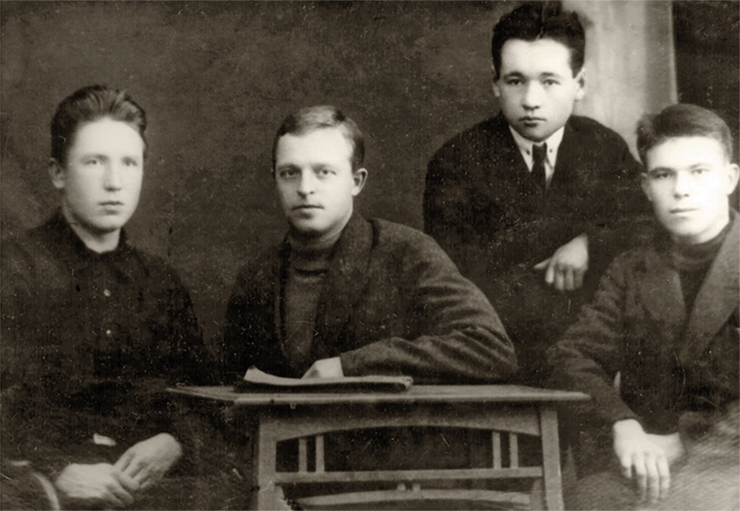
All the three men were worried. The visiting geologist, who was sitting in a deep armchair, rose up every now and then, trying to reach the map on the table with a pencil in his hand. He tapped on the map as if he wanted to prove he was right; having finished his sentence, he would sit down deeper into his armchair.
“You’ve pierced it everywhere on the Ishimbay land, Andrey Alekseevich. No room to stick a pin,” he rose up and again tapped on the map with his pencil. “And yet no oil. Stop splitting hairs. So much money’s been lost in vain!”
Trofimuk, a short, stocky man of about thirty, wearing a work jacket, was standing at the table with his head down as if his thoughts were elsewhere; he was listening silently. It was only when the last words were uttered that he raised his head and said:
“I don’t think the previous wells were drilled in vain. They didn’t give oil, but they showed us where to look for it.”
“And this well number three,” the visitor stood up again and tapped on the map; the sharpened tip of the pencil broke off, and the disarmed geologist flung the pencil fretfully onto the table. “This well number three,” he repeated, “which you sunk in spite of our warnings. So this is the end that crowns the work? The ultimate meaning of all wisdom on earth, so to speak?”
“No, I don’t think so,” Trofimuk spoke slowly, in a low voice, as if verifying himself. “One thing I see clearly: Ishimbay has stopped developing. We need to pour fresh oil into its veins, give it a new perspective. Those wells that you think were drilled in vain have erased many blank spots from the map in this area. Here lies their worth. As for Baikovsky number three, here irony is inappropriate. There’s an oil field in the east of the area. Even if number three itself reveals no oil, it will most likely show a direct path to it. Is it a risk? Yes, it is. But if one knew exactly where to drill for oil, one wouldn’t need to explore. I believe in this oil field.”
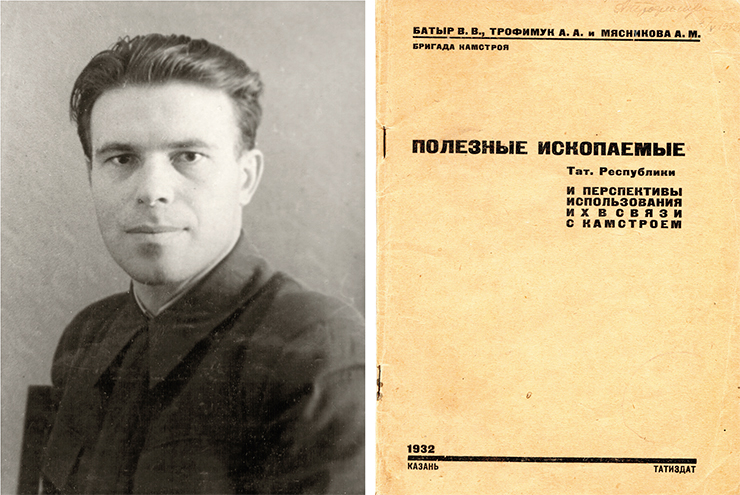
Now he was speaking quickly and loud. It became clear that this man, who, at first glance, appeared quiet, even shy, would transform once he was captured by an idea: he would grow passionate and unyielding in his conviction.
The second visitor stood by the window during the conversation, looking out onto the street. Outside the window, it was a gloomy morning of a deep northern autumn. The wind rattled with iron roofs and rushed heavy, dark clouds across the low gray sky. The streets below, not only the sidewalks, were swarming with people. The city of Ufa was overcrowded with evacuees.
The man standing by the window walked up to the table.
“These are the cores from the strata on which you pin your hopes,” he said, taking two short cylindrical bars from the table. “Could you please explain to me how can oil possibly accumulate in these rocks? These are dense limestones and clayey marls, with almost no pores. Where have you heard of an oil deposit in clay? Even if there is oil there, you still won’t be able to extract it from these tiny pores. I hope you do not deny surface tension, do you? No, Andrey Alekseevich,” he concluded with a sigh, putting the cores back on the table, “you appear to have forgotten Orton’s three conditions for the formation of oil deposits.”
“Science is called science because it doesn’t recognize fetishes,” Trofimuk was speaking calmly again. “Yes, there is usually no oil in clayey rocks and dense limestones. But you can’t take a law and make a fetish out of it. In this particular case, a deviation is possible from the pattern. Orton? No, I haven’t forgotten about him. But to achieve success in any field of science or technology, you need yet another condition. This condition is…”
The telephone on the table erupted with a long, shrilling call.
The Second Baku
When Andrey was a child, life was tough on him, sparing him little time for daydreaming. But it taught him, from an early age, to be independent and tenacious. He was four years old when, during the First World War, his family fled from Western Belarus to escape German invasion and settled in a remote Siberian town of Nizhneudinsk. He was seven years old when his mother, who served as a cook, died of typhus in the hospital, leaving his father alone to care about two children. A civil war was raging across Siberia. It was a time of hunger and cold. The children began wandering with their father, a laborer, from Nizhneudinsk to Omsk, from Omsk to Slavgorod.
Soon Andrey had to leave his father’s home and move in with another family.
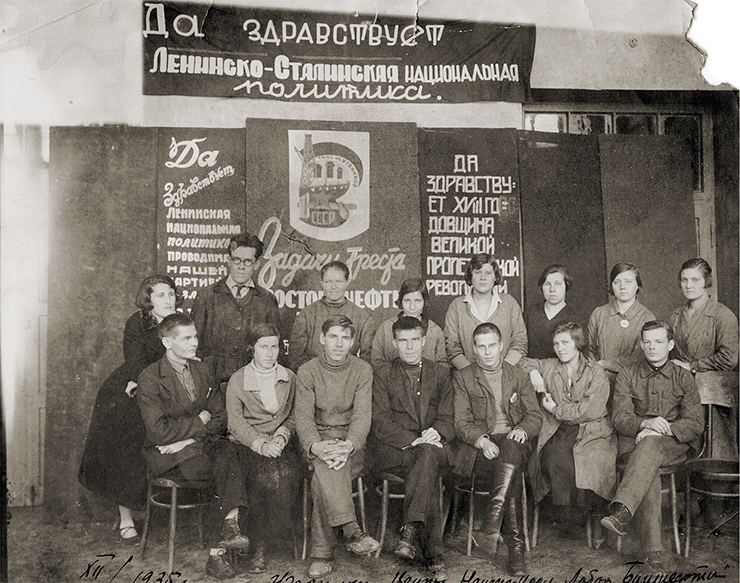
He lived in the house of a shoemaker, making a livelihood from odd jobs. In the pre-revolutionary Russia, such an odyssey of a child from low classes would have ended the way it usually did for kukharkiny deti (‘cook’s children’ in Russian, a reference to the state regulation of the late 19th century that forbade access for children from low classes to public schools). The little Andrey would have become, at best, an apprentice shoemaker, and for the rest of his life, he would have been nailing heels to the boots of townspeople in Slavgorod. But times were different. Andrey ended up in a boarding school, finished a seven-year program, and moved to the city of Kazan. He studied there for another two years and entered Kazan University, where he began to study at the geology department…
Life itself, it would seem, showed him the way – he was selected to stay at the university as a graduate student with the chair of mineralogy. He was going to be a scientist, the dream of dozens of his fellow students. He was well-off financially; he worked at a geology bureau; he lived in Kazan, a large cultural center. What else could one possibly desire?
But Trofimuk was bored sitting in the geology bureau and studying the groundwater regime. This was a necessary, practical job, but he had an impression that it stood somehow aside from the big tasks, from the highway along which his country was rushing. The period of the first five-year plan had ended, and the second one was about to begin; scaffoldings were rising everywhere. New giant plants, factories, and mines were popping up like mushrooms; new, rapid, noisy life was seething in what had recently been “the middle of nowhere.”
In 1929, the first industrial oil was discovered in the Ural Mountains, at the Chusovsky Gorodki on the Chusovaya River; in 1932, a gush of oil sprung at Ishimbay in Bashkiria. Speaking from the rostrum at the XVII Congress of the All-Union Communist Party of Bolsheviks, Stalin set the task: “To start serious works on organizing an oil base on the western and southern slopes of the Ural ridge.” The “Second Baku” was growing by leaps and bounds…
So Trofimuk decided to leave his comfortable job in a big city; soon he found himself at an oil research laboratory in Bashkiria as a geologist in charge of the Ishimbay area.
Reefs of the Permian Sea
The Ishimbay oil behaved petulantly: it eluded grasp as if it was playing hide-and-seek; it appeared at the most unexpected spots and suddenly vanished exactly where it was supposed to be. It was clear that oilmen were dealing with fields of some peculiar, extraordinary type.
Some believed that the stratum was partly washed, which explained why it suddenly emerged and disappeared; others said it was a formation with a steep plunge; still others put forth the reef hypothesis. Conjectures had long been made about the reef nature of these massifs, but they remained insufficiently elaborated.
Faced with the Ishimbay issue, Trofimuk revealed, from the very beginning, another trait of his personality – an enterprise talent. He decided to put an end to the fruitless debate and present evidence that would make things fully clear. With all the passion of a researcher and all the energy of a practical worker, Trofimuk began to collect material.
It took him tremendous patience and perseverance to accomplish this task. Suffice it to say that he had to look through ten thousand thin sections, i. e., plates one hundredth of a millimeter thick, which were cut from rocks that were passed through when drilling the wells. With a magnifying glass in his hands, he explored the entire Mount Yurak-Tau, one of the solitary mountains of Sterlitamak. And finally, he achieved his goal. He collected the material that indisputably proved the reef origin of the Ishimbay deposits.
Subsequent explorations, which Trofimuk conducted together with Syrov, a geologist, once again confirmed the reef hypothesis. At first, three oil-containing limestone massifs were found in the area. Then, it turned out that they narrowed down, turning into some kind of isthmuses, and then expanded again, forming massifs. This was precisely the kind of budding typical of reefs.
The new massifs found at Ishimbay yielded a sharp rise in oil production in 1938 and 1939. And the next year, 1940, Trofimuk was appointed chief geologist of the Ishimbayneft Trust.
Attack on oil
And now this “oil child” was dying… The Ishimbay area, which was thriving only two years ago, was now on the decline. Production from the old fields was going down. Salvation was to come from fresh reinforcements, from new oil-bearing areas. But there were none. Reconnaissance missions yielded zero results.
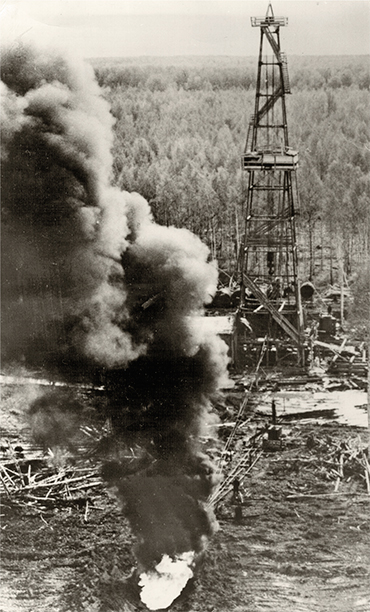 “The trouble with Ishimbay,” said Trofimuk when he presented his plan of exploration works to the chief geologist of the plant, “is that we always begin from the very beginning. We extract oil from one deposit. All the structures found in the area represent a chain of same-type reef deposits. And now we are also looking for the same reefs. But one field is an unreliable, shaky foundation, insufficient to build a strategy for the development of the whole area.”
“The trouble with Ishimbay,” said Trofimuk when he presented his plan of exploration works to the chief geologist of the plant, “is that we always begin from the very beginning. We extract oil from one deposit. All the structures found in the area represent a chain of same-type reef deposits. And now we are also looking for the same reefs. But one field is an unreliable, shaky foundation, insufficient to build a strategy for the development of the whole area.”
“What do you suggest?” asked the chief geologist.
“We should stop threading water and move eastward, looking for deposits of a different type. After all, the eastern area, or rather the eastern side of the pre-Ural depression, is completely unexplored and little understood.”
Trofimuk pointed to the map, where, to the east of the town, a narrow green strip of lowland was stretching, closely adjacent to the light brown spots at the foothills of the Ural Mountains.
“We have to take risks. The area with its powerful economy and cadre is totally worth it. We need to deploy exploration works on a broad front, sink five dozen wells…”
Before Trofimuk there was a different practice of exploration works. Data obtained by geophysical methods were used to select a small area, where three to five wells were sunk. However, since these data were approximate and often contradictory, the drilled wells gave mostly negative results, and since they covered a small area only, they could not pinpoint a further direction for exploration. Many wells were dug yet with little effect.
Trofimuk’s method was to sink a few wells to explore the promising zones of the Bashkir Urals and identify new oil fields in that region.
The plan proposed by Trofimuk was a bold, daring attack on oil. The traces, albeit unclear, suggested the presence of oil deposits east of the town of Ishimbay.
Many a scientist disagreed with him. But Trofimuk did not give up. He sunk two wells under his own personal responsibility. They were drilled to a given depth and proved dry! (This word is not entirely accurate, of course, since those wells had water, but this is how oilmen call wells that do not yield oil.) He instructed to drill another three wells, but they were dry too.
A chain of failures began. One by one, the exploratory wells fell out of drilling, but no oil was found. Trofimuk continued to insist on having his own way. He felt the atmosphere gradually thicken around him and the eyes of many directing towards him, the main culprit of the failures…
It was the year of 1942. Trofimuk was appointed the chief geologist of the plant. He did not treat this new appointment as a triumph. He knew well the meaning of the trust given to him by the Bolshevik Party and clearly understood how much effort and energy he needed to invest in order to justify it with honor.
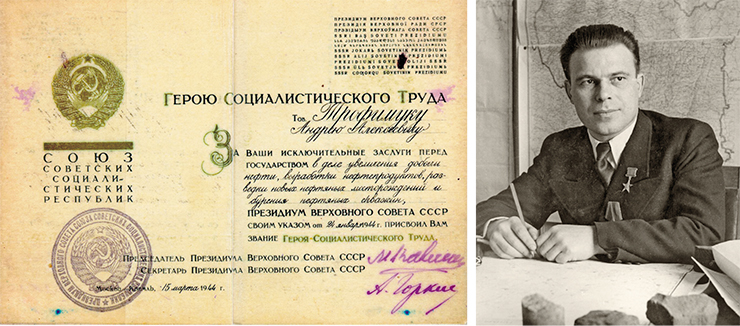
The thoughts about Ishimbay, about its future, about the oil in the east of the area, were always on his mind. Every now and then, he would come to the old places so familiar to him, stroll around the drilling sites, ponder over the maps and well sections together with Syrov, who had replaced him as chief geologist of the Ishimbayneft Trust.
Eventually, a ray of hope flashed ahead. East of the town, near the village of Maloye Baykovo, a gas survey revealed the presence of petroleum gas in the soil.
“We need to dig three wells here and check the detected gas anomaly,” Trofimuk and Syrov decided.
Now they had a disagreement with the scientific expedition that had arrived in Bashkiria. Nonetheless, Trofimuk sunk three wells, stretching them from west to east.
The second well encountered Artinskian rocks, which, as Trofimuk hoped, should contain oil, at a great depth of one thousand four hundred meters. Obviously, the stratum descended there. What would the third well show? And could there even be oil in these limestones and marls?
This is what the three men were arguing about on that gloomy autumn morning when they were interrupted by a telephone call.
We’ve snatched it by the tail!
Trofimuk picked up the phone.
“Now you will be talking to Ishimbay,” he heard in the receiver. A minute passed until he could distinguish Syrov’s distant voice amidst mosquito squeaking, buzzing, and blurred fragments of other people’s conversations.
“Andrey Alekseevich? Number three revealed Artinskian rocks at a depth of seven hundred meters. There are even droplets of oil!..”
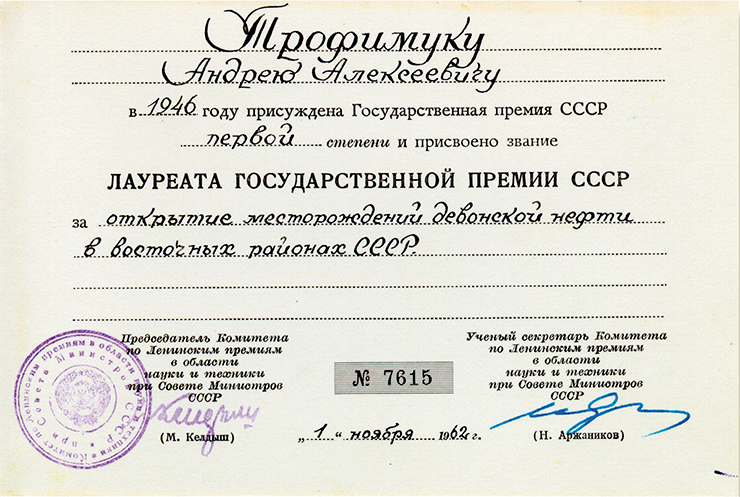
In 1955, Trofimuk became director of the All-Union Petroleum Institute in Moscow, but two years later, when the decision was made to establish the Siberian Branch of the USSR Academy of Sciences, he readily agreed to move to Siberia to lead the work on organizing a new geological research institute. When asked by Mikhail A. Lavrentyev about the reasons for his decision to abandon a prestigious post in the capital city in exchange for working in Siberia, where there seemed unlikely to be any oil, Andrey A. Trofimuk said: “You are right, so far we have not yet found in Siberia a single oil field that deserves development, but from what I know about the results of the ongoing search for oil and gas, I can say that Siberia is literally floating on oil and I find it appealing to work on revealing these buried petroleum seas” (Trofimuk, 1997)
When the telephone conversation was over, Trofimuk stood silently for a minute. The news was extremely important. The same stratum they encountered in the second well at a depth of one thousand four hundred meters lay at a depth of seven hundred meters in the third well. So it went up steeply there. Uplift is the main mechanism of deposit formation. No matter that only droplets of oil were found in that well. The stratum would rise even higher, and right there, in the arch, they would find an oil deposit.
“The condition,” he continued the phrase interrupted by the call, “that is necessary for finding oil is courage. And now I can tell you the news: Artinskian rocks have been discovered in number three at a depth of seven hundred meters. The oil structure exists; there is no doubt about that anymore. We’ve gotten in its train; in other words, we’ve snatched it by the tail. Now it won’t escape.”
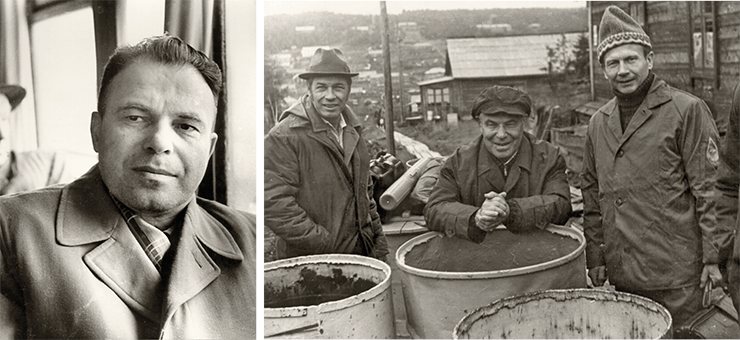
“The structure exists,” said the visitor standing at the table, “but there is no oil in it. It’s a dead, empty structure. It has no room for oil to accumulate.”
“We’ll see,” retorted Trofimuk…
Oilfall
In Bashkiria, September is a truly autumn month. On the previous day, the cold rain was pouring incessantly round the clock. But the night came, followed by such a quiet morning, with golden sunlight permeating everything around, making it look so clean and beautiful that one could hardly believe it was autumn.
The car was racing at top speed along the highway from Ufa to Ishimbay. When they crossed the bridge over the Belaya River, Trofimuk asked his companion, Kuvykin by name, who was the head of Bashneft:
“Shall we go straight to the drilling site, Stepan Ivanovich?”
“Right there, of course. We have nothing to do in the town.”
Without stopping, the car got onto the road to Kinzebulatovo and began diving over the humps. The road descended into a hollow and then began climbing up the hill. The driver switched to the second speed. The car growled indignantly, but still, splashing the puddles left after yesterday’s rain, it managed to drive up. At that very moment, all those sitting in the car suddenly burst out:
“Look! Look!”
In front of them, right at the drilling site number five, they saw a huge black mushroom fifty meters high. It stood motionless; only its cap was swaying from side to side, slowly and smoothly; it seemed as if it was the cap that was emitting a dull, low rumble that was coming from that direction.
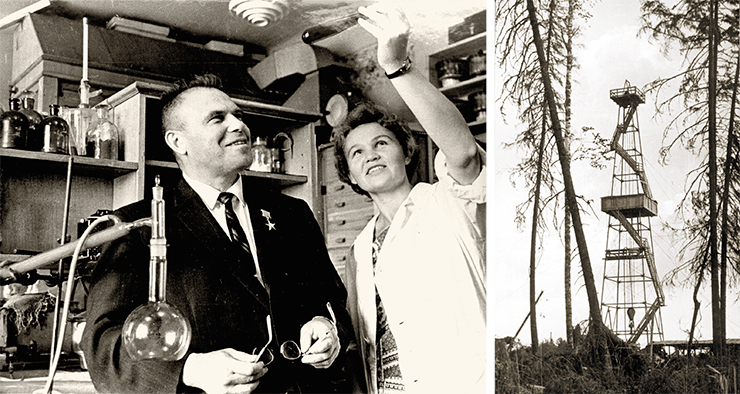
The area adjacent to the drilling site was swarming with people. Kolkhoz people from the surrounding villages, townspeople, workers from the neighboring drilling rigs – everyone had gathered there, mingling in a motley, noisy, cheerful crowd that was moving, shouting, laughing, and looking at the oil gush. They were quickly digging storage pits for oil. Everyone was in an upbeat, festive mood. When, from time to time, a gust of wind would suddenly turn the cap of the mushroom and shower the people standing closer to it with oil splashes, they rushed away with laughter but came back within a minute.
A thick column of oil, rising up as high as a ten-story building, scattered far around like rain. Everything was black: cars, soil, people, even the nearby river Tairyuk.
If you look at the map of the oil and gas fields on the Siberian platform, which was created by specialists from the Trofimuk Institute of Petroleum Geology and Geophysics, Siberian Branch, Russian Academy of Sciences, you will easily find the conspicuous Kuyumba–Yurubcheno–Taiga gas and oil field, which stands out for its size.Academician Trofimuk believed that this supergiant gas and oil field on the territory of the Krasnoyarsk krai had every reason to become the largest hydrocarbon reserve on the territory of the Soviet Union. The famous geologist was confident that the vast expanses of East Siberia were no less promising in terms of finding oil and gas than West Siberia. In 1987, he drew up a Concept of Creating Large Gas and Oil Production Bases in East Siberia, which he defended at all levels. He insisted on launching test production in the explored part of the Krasnoyarsk supergiant and on continuing the search for new fields. However, the concept proposed by the outstanding petroleum geologist, a thoroughly elaborated yet scientifically bold one, turned out to be unpopular in the new realities of the perestroika. After 1990, all prospecting works in the country were terminated
Standing by the river, one could observe a natural phenomenon not described in any geography textbook – an oilfall. Awakened by a torpedo explosion, the oil needed a way out other than through the well. It had pierced the bank, making a hole in it, from which it cascaded into the river. The geese, swimming stately in Tairyuk, changed the color from snow-white into brown-black.
It seemed that the oil that had been languishing underground for millions of years, the oil that man had so patiently and stubbornly sought, now wanted to reward itself for its long captivity and praise man for his effort, perseverance, and courage.
Looking at the stream of oil gushing from the well, Kuvykin repeated in delight:
“That’s two thousand tons per day! Two thousand!..”
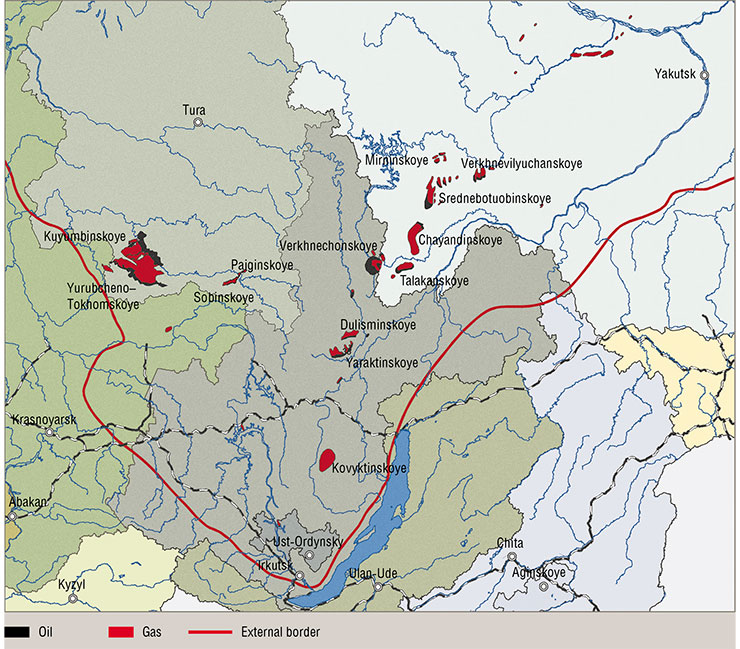
“Despite the fact that the expert assessment performed by the Ministry of Economy of the Russian Federation did not approve my estimates for the KYuTM oil reserves, initial well flow rates, and extraction growth rates and volumes, I continue to assert that my assessment of both the oil reserves and possible rates of their extraction and initial flow rates of the KYuTF wells is a minimal one. ‹…›
“Based on the experience of developing oil fields in West Siberia, in the KYuTF conditions it is possible to achieve a production level of up to 100 million tons within 10 years. In addition to the experience of West Siberia, one can use the experience of developing KYuTF-like oil deposits in the People’s Republic of China.
“In 1975, the Rengchiyu oil field was discovered in the Huabei depression. It is associated with a buried outcrop of very ancient (Sinian) carbonate rocks. The maximum flow rates of the wells reach 5000–6000 tons per day. In 1977, 11 million tons of oil was obtained at this field; every year in 1979 and 1980, 13 million tons. Judging by these data, the field has already reached its maximum production level of 13 million tons. It can be assumed that the recoverable reserves of the Rengchiyu field are likely not to exceed 150 million tons, i. e., an order of magnitude less than at the KYuTF. The rate of oil extraction there is amazing – only three years has passed from the discovery to peak production! The reservoirs of this field are similar to those of the KYuTF. The oil-hosting rocks are of the same age. One can only regret that the exploration of the KYuTF has virtually been terminated and test production has not even begun. ‹…›
“When I got to know the conditions on which the Verkh-Tara oil field in the Novosibirsk oblast was handed over for development to a petroleum joint-stock company based in the Tyumen oblast, I studied materials on the geology of the entire Severny raion of the Novosibirsk oblast, where the said field is located. An analysis of the available materials on the oil and gas potential of the Paleozoic in the Novosibirsk and Tomsk oblasts convinced me that the territory of these regions deserves more intense efforts in search of Paleozoic oil in Carboniferous, Devonian, Silurian, and Ordovician deposits.
“Regarding the conditions of development of the Verkh-Tara field, under which the JSC owns 92 % of all the produced oil and the Russian Federation and the Novosibirsk oblast only 8 %, I showed that only such conditions are equitable under which only 20 % of the produced oil should be transferred to the investor (JSC) and 80 % of the oil should belong to the Russian Federation and the Novosibirsk oblast as its constituent entity. This study was presented in the form of a memorandum entitled ‘Novosibirsk oblast on the eve of creation of the oil and gas industry,’ which was submitted to the administration of the Novosibirsk oblast.
“The studied experience pertaining to the conditions on which identified oil and gas fields in the Russian Federation and some CIS countries are handed over to investors for development compelled me to critically review this experience in a special article ‘On the investor’s share in the distribution of development output for gas and oil fields,’ which was sent in December 1994 for publication in the journal Geologiya nefti i gaza (‘Geology of Oil and Gas’).
“Furthermore, in the reporting year, I prepared and submitted to the governing body of the Ufa Scientific Center, Russian Academy of Sciences, and to the sectorial institute BashNIPIneft excerpts from the paper ‘Prospects for the oil and gas potential of the Riphean–Vendian deposits of Bashkortostan,’ in which I draw attention to the need for additional exploration of the Salikhovo and Kinzebulatovo areas in search of oil in the said deposits.”
The Kinzebulatovo fountain uncovered a new deposit, a unique one in the Soviet Union. Here, as an exception to the rule, oil was found in limestone and clayey rocks. Their cracks turned out to be an excellent reservoir.
There are many reasons to think that oil had come here from below, from deeper layers, rising through these cracks. The real birthplace of the Kinzebulatovo oil is neither an idle question nor a purely theoretical one; on the contrary, it is a very practical and relevant problem.
A treasure chest
In that autumn of 1943, when the events took place, a new word began to be heard increasingly more often at the oil fields of Bashkiria. This word, which now appeared at meetings, in newspapers, and in conversations, not only among geologists but also among laborers, had rarely been used before outside the specialists’ circle. That word was Devonian.
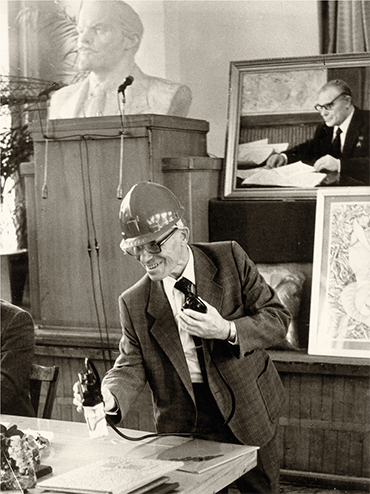 Oil from Devonian strata had long been something one knew about. The oil sands near Titusville in North America, the development of which in 1859 marked the beginning of the petroleum industry, belonged to the Devonian system. In our Ukhta, where Devonian sediments come out to the surface, local people knew about “rock oil” as early as in the late 17th century. For the last few decades, industrial oil has been extracted from the Devonian reservoir in Ukhta. But the volume of this production was small.
Oil from Devonian strata had long been something one knew about. The oil sands near Titusville in North America, the development of which in 1859 marked the beginning of the petroleum industry, belonged to the Devonian system. In our Ukhta, where Devonian sediments come out to the surface, local people knew about “rock oil” as early as in the late 17th century. For the last few decades, industrial oil has been extracted from the Devonian reservoir in Ukhta. But the volume of this production was small.
During the first five-year plan, many Devonian oil reconnaissance missions were launched in the Second Baku. One mission after another. Wells were drilled at Krasnokamsk, in the Kirov oblast, at Kuibyshev, at Syzran – all in vain. It was a very difficult task not only geologically but also technically. The Devonian stratum lay deep, and the Second Baku had had no experience in drilling deep wells.
In 1931, one set out to drill such a well at Krasnousolsk in Bashkiria. Along the way, the drills encountered limestones with siliceous layers, i. e., very hard rocks that required diamond chisels. Meanwhile, oil was discovered nearby at a depth of only seven hundred meters, and the Krasnousolsk well was abandoned…
In 1938, on the initiative of a geologist Bochkov, one began to drill a well towards the Devonian at Tuimazy, at the western end of Bashkiria. One thousand five hundred meters had been passed; another two hundred remained. Right at that time, “shallow” oil was discovered, again in Ishimbay. “Why should we go down one and a half or even two kilometers when we have oil at several hundred meters?” many would say. So it happened that “shallow” oil again stood in the way of “deep” one…
Still there were people who were unafraid of risk or responsibility and believed that not a single major endeavor could be accomplished without these elements. They knew that discovering the Devonian was a difficult yet necessary task for further development of the Second Baku.
Trofimuk, back then still a geologist at the Bashneft Research Laboratory, had long been fighting to explore the Devonian. Everywhere – in his reports to the plant administration, in the press, at meetings – he would insist on the necessity of these works. Having received the first data on the Ardatov well, in June 1940, Trofimuk, together with a geologist Timergazin, published a paper in which he confidently claimed the presence of a new oil-bearing horizon, still unknown in Bashkiria.
To the Chairman of the Government of the Russian Federation V. S. ChernomyrdinI am sending you my publication Concept of Creating Large Gas and Oil Production Bases in East Siberia (Novosibirsk: OIGGM SB RAS, 1994). This work contains two documents published as an appendix:
1. Concept of Creating Large Gas and Oil Production Bases in East Siberia (in August 1987, I submitted this document to the Central Committee of the CPSU).
2. Kuyumba–Yurubcheno–Taiga Gas and Oil Field: A Supergiant in the Krasnoyarsk Krai (Fundamentals of a Feasibility Study). Novosibirsk: OIGGM SB RAS, 1992 (Preprint No. 8).
The first document, with your participation as Minister of the Gas Industry of the USSR, was discussed on February 12, 1988 at a meeting of the Scientific and Technical Council for the Bureau of the USSR Council of Ministers and was largely approved. According to it, the State Planning Committee of the USSR and the relevant ministries were assigned the task of preparing a technical and economic assessment and proposals for comprehensive development of oil and gas resources in East Siberia and the Yakut Autonomous Soviet Socialist Republic until 2005.
The second document was considered by an expert commission of the Ministry of Economy of the Russian Federation at the end of 1993 and was not supported.
During the discussions of this document at numerous meetings of petroleum production specialists, taking into account the feedback from highly qualified specialists in petroleum geology, which continued throughout 1992 and 1993, I became convinced that my estimate for the reserves of the identified deposits of the Krasnoyarsk supergiant (i. e., 1400 million tons of oil, 224 billion m3 of associated gas, and 1 trillion m3 of gas in gas caps) is a minimal one. These deposits contain up to 2 billion tons of recoverable oil reserves. Furthermore, the deeper layers of the Krasnoyarsk supergiant have not been explored. By deepening the exploration wells by 1000 m (from 2500 m by bringing their bottoms to 3500 m), we may discover new hydrocarbon deposits. ‹…›
Based on all the achieved and expected figures, the Krasnoyarsk supergiant may turn out to be the largest oil and gas field on the territory of the former Soviet Union. Despite the existing and expected prospects for oil and gas deposits in East Siberia, the reconnaissance and search for these deposits has essentially been terminated.
I ask hereby for your directions:
1. To continue the search for oil and gas in East Siberia, especially in the Krasnoyarsk krai.
2. To instruct MNTK Nefteotdacha in organizing additional exploration and test production missions in the most explored, western part of the Krasnoyarsk supergiant in 1994 in order to verify the efficiency of the proposed methods for uncovering oil objects and the principles of their development.
I express the hope that you might take interest in my proposal to organize the development of the Krasnoyarsk supergiant by the combined forces of the Russian Federation, Ukraine, and Belarus. Instead of annually supplying Ukraine and Belarus with oil and gas by means of our extremely reduced capabilities, I suggest we should entrust this matter to the consumers of oil and gas as well.
The publication hereby sent to you also considers the issue of reimbursement of the costs incurred by investors of both domestic and foreign shares of produced oil and gas. The main idea of my proposals is clear from the following examples.
Example 1. Government organizations have assessed the reserves of two fields in the eastern shelf of Sakhalin Island. The reserves are 100 million tons of oil and 400 billion m3 of gas. Given the world oil prices of $130 per ton and gas prices of at $76 per 1000 m3, the total value of the reserves is $43,400 million. Investors themselves determined the costs of extraction, transportations, and liquefaction at $8–10 billion, which, even at a maximum cost estimate, amounts to 23 % of the value of the subsoil reserves. ‹…›
The Verkh-Tara oil field has been discovered in the Novosibirsk oblast. Its reserves… are determined at 24.5 million tons, which yields $3185 million at a price of $130. During the auction, one of the investors calculated that the cost (in US dollars) of extracting and delivering the oil to consumers and partially refining it would be $415 million, which is 13 % of the value of the subsoil reserves.
In other words, the investor’s share in the distribution of oil between them and the owner of the said fields should not exceed 15–25 %; for major fields such as the Krasnoyarsk supergiant, it should not exceed 10 % of the value of the subsoil reserves. The greater the reserves’ volume and wells’ productivity, the smaller the investor’s share.
Summing up, the very idea to hand over oil and gas fields into concession to foreign investors is eyebrow-raising. Until 1989, the Soviet Union was able to cope with this task without any help, even with the opposition of leading foreign powers, and achieved world leadership in this important industry.
It is also absolutely necessary to restore the state monopoly on trade in strategic resources, primarily, oil, gas, and refined products.
Gradually, other geologists would gather around him, those who were convinced, like him, that the future of Bashkiria lies with the deep oil. In June 1940, when a threat arose that the Devonian well at Mount Shikhan would be stopped, he organized a special meeting of geologists in Ishimbay to discuss the problems of exploration of Devonian deposits and more ancient ones in Bashkiria.
“Imagine,” said Trofimuk, “that you see a treasure chest. You struggle to open it, but once you do so, you find inside a second chest, also locked. You open it too. There you find a third one. Won’t you try to open it? Are you really going to backtrack and give up on both the treasure and the efforts you have spent?”
Tuimazy
Tuimazy is located in the far west of Bashkiria, near its border with the Tatar Republic. The search for oil in these places began a long time ago. Back in the 1860s‑1870s, a landowner named Malakiyenko drilled wells several dozen kilometers from here, at Bugulma.
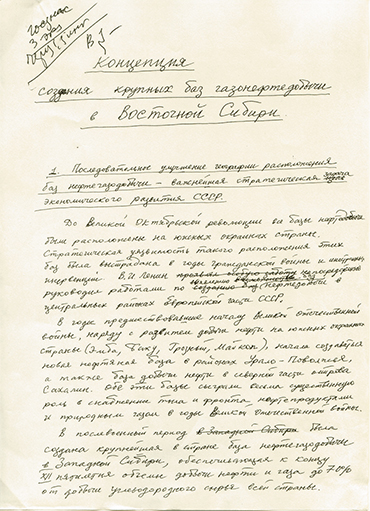 Nobel, the biggest oil industrialist of the pre-revolutionary Russia, clearly smelled the presence of oil in Tuimazy. This area was in focus of his special attention. And he attended to it in a way very typical of a capitalist. The discovery of new oil areas was against his financial interests as it would have caused a decline in oil prices. That is why Nobel’s agents, who were traveling in 1910–1914 from one village to another, would sign agreements with peasant societies, according to which the peasants assumed, for a fair amount of money, an obligation not to allow any mining or geological works on their land…
Nobel, the biggest oil industrialist of the pre-revolutionary Russia, clearly smelled the presence of oil in Tuimazy. This area was in focus of his special attention. And he attended to it in a way very typical of a capitalist. The discovery of new oil areas was against his financial interests as it would have caused a decline in oil prices. That is why Nobel’s agents, who were traveling in 1910–1914 from one village to another, would sign agreements with peasant societies, according to which the peasants assumed, for a fair amount of money, an obligation not to allow any mining or geological works on their land…
It was only under the Soviet rule, during Stalin’s five-year plans, that one would set out to explore and develop Tuimazy. In 1933, a field geologist Chepikov, now a Stalin Prize laureate, explored these places with a mountain compass and a geological hammer in his hand. Well drilling began. In 1937, the first oil gush erupted from a well drilled by a master craftsman Belikov. That event marked the beginning of industrial development of that area.
Still, Tuimazy was lagging far behind Ishimbay. The wells produced little oil and were difficult to drill as the rocks here were hard. Some even believed that this area had no prospects, so one should give up on it.
The opposite opinion was expressed by Mikhail V. Maltsev, a geologist of Tuimazyneft. He unconditionally joined the “deep oil” camp, which stood for the exploration of the Devonian at Tuimazy, and set out, most enthusiastically, to draw up a project. According to this project, well no. 152 had to penetrate the entire thickness of sedimentary rocks and reach the crystalline foundation on which they lay. The drilling of this well began already during the war, in December 1941.
Meanwhile, the chief geologist of Tuimazyneft grew distrustful of that drilling rig. In April 1942, when the boring head had passed more than a thousand meters and reached Carboniferous deposits, the chief geologist raised the issue of stopping the well.
“In wartime there is no point in drilling such a deep well,” he said.
At his suggestion, the trust was ordered to stop drilling number 152 and switch it to the Carboniferous. The victory over the Devonian was again postponed indefinitely.
“This is whom the Devonian needs…”
One day, when he came to work, Maltsev learned that Andrey Trofimuk had been appointed to the position of chief geologist at Tuimazyneft.
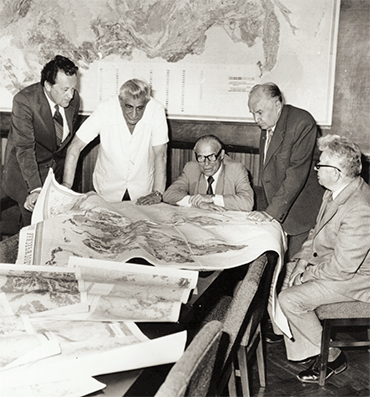 Trofimuk’s speeches advocating the exploration of the Devonian were still fresh in everyone’s memory, and so was the meeting of geologists he organized two years ago as well as his persistence and integrity with which he was fighting for “deep” oil. “This is whom the Devonian needs,” thought Maltsev. “This man, once he grabs hold of something, he won’t let it go.”
Trofimuk’s speeches advocating the exploration of the Devonian were still fresh in everyone’s memory, and so was the meeting of geologists he organized two years ago as well as his persistence and integrity with which he was fighting for “deep” oil. “This is whom the Devonian needs,” thought Maltsev. “This man, once he grabs hold of something, he won’t let it go.”
In October 1942, Trofimuk arrives at Tuimazy. He instructs Maltsev to make a detailed report. Based on this report, a decision is made to sink a new exploration well.
The drilling rig system is designed for a depth of one thousand eight hundred meters. It seems that for the first time in the history of exploring the Devonian, a firm decision has been taken to complete the drilling mission at all costs. Persistence and determination has pulled everyone together – from Kuvykin and Trofimuk to an unskilled laborer…
Developing an exploratory well is a complicated and responsible task. First of all, you need to find out exactly at what level the oil-bearing stratum lies so that the holes to be punched in the casing will be located right to the opposite. This is done by performing a well log survey. Oil is a poor conductor of electric current. Underground water, however, is a good one as it contains salts dissolved in it. Therefore, a special device inserted into the well shows an increase in resistance where there is oil and a decrease where there is water. When the readings from the device are plotted on paper, they give a broken line, i. e., a well log diagram.
Now, when a well log diagram has been obtained and a casing string has been set and cemented, you need to “shoot through” the casing, i. e., punch holes precisely to the opposite of the place indicated by the well log survey. So you put an electric hammer loaded with bullets into the well. Then you press the button and shoot. Several dozen bullets pierce the steel and cement, and opening the way into the well, they bite into the stratum. Oil is about to splash from it but remains contained by a column of water left in the well after the flushing. The oil will rush upward only when some of the liquid is scooped out and the pressure from the column becomes lower than in the oil reservoir.
All these days, Kuvykin and Trofimuk hardly leave the drilling site. Together they oversee the works. Every operation has to be performed thoroughly. Every little bit counts – it could play a fatal role if left unseen…
Trofimuk gets too little sleep; his eyes are red from insomnia; he has lost weight but he is full of life and energy. It is September again, and just like a year ago, he and his comrades are preparing a rich gift for their country.
“The Devonian is defeated!”
In the evening of September 25, a large group of people has gathered together near well number 100. Some of them are merely spectators; the others have fought for it, defended it, designed it, drilled it. Everything is ready; soon one will begin swabbing the well, i. e., scooping water out of it in order to cause a gush.
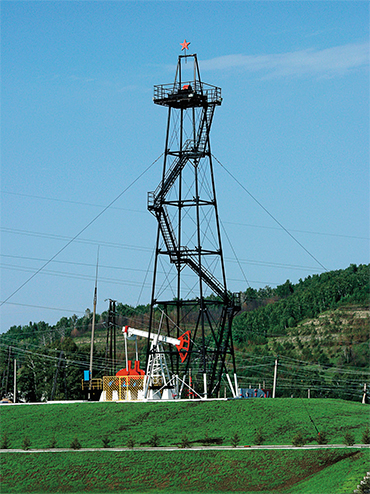 The platform near the drilling rig itself is empty. Only one worker in a black hooded rubber suit, which makes him look like a medieval monk, is walking back and forth along the platform. Above the wellhead, one can see a swab swinging on a rope, i. e., a long, narrow piston with a valve that opens upward.
The platform near the drilling rig itself is empty. Only one worker in a black hooded rubber suit, which makes him look like a medieval monk, is walking back and forth along the platform. Above the wellhead, one can see a swab swinging on a rope, i. e., a long, narrow piston with a valve that opens upward.
The swab goes down and disappears into the well. After a minute or so, the well begins to push out water from its mouth, and the swab emerges from beneath it. The piston plunges the second, third, fourth time; the pauses grow longer and longer between its appearances with water flowing in front of it. And the stream of water becomes higher and darker every time.
The short autumn day is coming to an end; the dusk is setting quickly. There is no oil yet. It is dangerous to continue in the dark; an accident may occur.
“We have to postpone it until tomorrow,” Kuvykin decides.
The next day, just before dawn, a crowd gathers again at the rig. The tenth, the eleventh swab. A full five long minutes passes before the piston returns.
The twelfth swab. Suddenly, a dark brown, almost black stream hisses out of the well and rises above the upper trusses of the tower. The first gush of Devonian oil has sprung!
The people shake hands. Here it is – the outcome of the many months of worrying, sleepless nights, and hard work. Now they can rightfully say:
“The Devonian is defeated. We, the Soviet people, did this for our beloved Motherland!..”
Two years have passed since that day. The war has ended a long time ago. Millions of people who fought to defend the Motherland are now back home. He who left as a youth arrived as a mature man, tempered by severe trials. Thousands of oil workers from Bashkiria are back home too. The people who were there in the wartime have matured too, and they learned a lot during these difficult and glorious years…
Oil production at Tuimazy has increased twentyfold. The words written by Trofimuk and Timergazin back in 1940 have come true – a new, more powerful oil stratum was encountered underneath the ones in operation.
Number 100 uncovered one horizon; in July 1945, another Devonian horizon emerged from beneath it, an even richer one. A Devonian oil gush sprung in the Kama region; Devonian oil is also being produced on the Volga. New prospects have opened up for the entire Second Baku with its vast space – from the city of Molotov in the north to Saratov in the south…
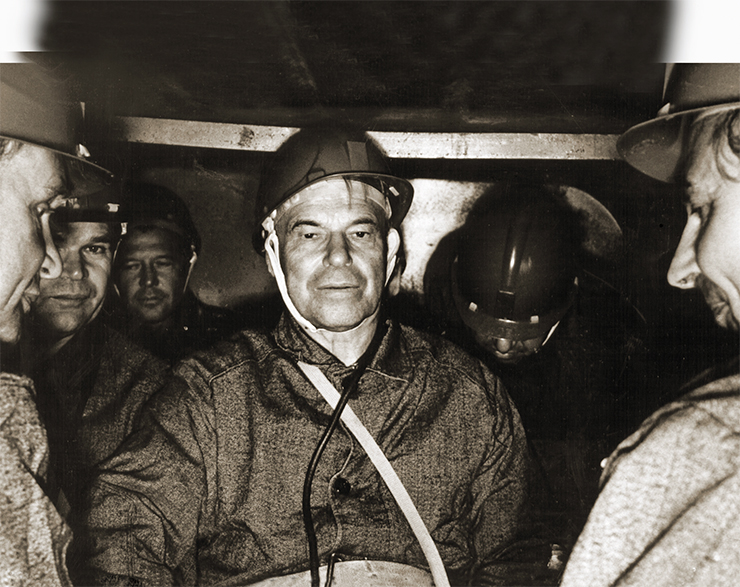
In the office of the Bashneft chief geologist, on his writing desk, there is a bottle of thick iodine-like liquid. So much labor, struggle, thought and willpower; so much emotion, so much worry and joy is contained in it.
Trofimuk takes the bottle in his hands.
“If it weren’t for Devonian oil,” he says, “the Second Baku would have forever remained the younger brother of the first Baku. Now things are different. There are eighty structures in Bashkiria. Even if not all of them, if only ten, even five, percent give as much as Tuimazy, can you imagine what this means?”
References
Academician Trofimuk: Siberia Floats on Oil // SCIENCE First Hand, 2007. N 3 (15). P. 16–25.
Andrey Alekseevich Trofimuk / Eds. D. Kh. Gik, R. I. Kuz’menko, G. S. Fradkin; Introduction by A. E. Kontorovich, V. S. Vyshemirsky, G. S. Fradkin. Moscow; Nauka, 1991 [in Russian].
Glavnyi geolog (Chief Geologist). Novosibirsk: Sib. Otd. Russ. Akad. Nauk; Geo. 2002 [in Russian].
Minenko N. A. Tyumen’: letopis’ chetyrekh stoletii (Tyumen: Four-Century Chronicle). St. Petersburg: Rus’; Tyumen, 2004 [in Russian].
Mogilevsky L. Andrey Alekseevich Trofimuk. Moscow: Profizdat, 1947 [in Russian].
Trofimuk A. A. Sorok let boreniya za razvitie neftegazodobyvayushchei promyshlennosti Sibiri (Forty Years of Fighting for the Development of Oil and Gas Industry in Siberia). Novosibirsk: Sib. Otd. Russ. Akad. Nauk; Ob. Inst. Geol. Geofiz. Min.., 1997 [in Russian].
The editors are grateful to V. D. Ermikov, former Head of the Department of Innovation Programs at the Institute of Geology and Mineralogy SB RAS for his assistance in preparing the materials; to Cand. Sci. (Geo.–Min.) L. K. Levchuk, V. N. Bogoslovskaya, and E. G. Sokolova, staff members of the Institute of Petroleum Geology and Geophysics SB RAS; and to the press center of JSOC Bashneft


